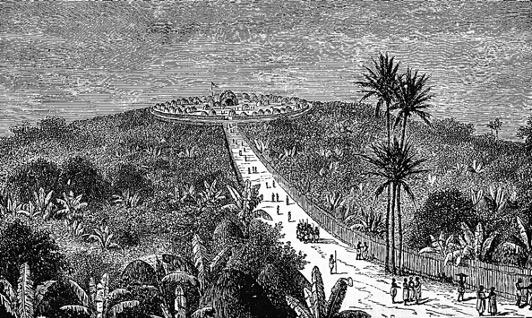
Time & Space in the Architecture of the Eastern African City
Lectures (3)
Loading Accordion Items...The Overview
The course is an exploration of the evolution of space and the architecture of peoples in Eastern Africa and it contribution to contemporary urbanism. It identifies the early precedents from antiquity based on literature and archival information. Further, the early precedence uses existing examples of vernacular spatial practices epitomised in the architecture and built environment per se. The scale ranges from the micro-level unit of dwelling, village organization, a conglomeration of such villages, secondary urbanisms up to the level of the contemporary city. Whereas the city is the object of analysis, this is premised in the understanding of rural and traditional practice.
Time in antiquity is described as prior time before the advent of 20th Century Western colonialism and I use the concept of Zamani as elaborated by sociologist John Mbiti (1969). With minimal records this uses multiple sources form secondary literature of early western travellers, oral sources as well as some imagery from archival information. The present time is further based on the event of western colonialism in the early 20th Century. This instigated spatial redefinitions at various scales of living in the region. Most of this is well-documented through various authenticated records in colonial and government archives that are used in the course. Again, I use a term coined by Mbiti, Sasa; a broad concept that encompasses modernisation of African space under new states that emerged with colonisation and were retained as the Postcolony.
The East African regional context is a loose term that includes between three (3) and up to fifteen (15) or more states. For many the former British colonies of Kenya, Uganda and Tanzania are always included. These three states are now entwined in Cooperation (EAC) with Rwanda, Burundi and South Sudan. The concept sometimes broadens to include countries in the Horn of Africa i.e. Ethiopia, Somalia, Eritrea, and Djibouti. With the Indian Ocean commonality, one can further include others like Mozambique and the Island states of Comoros, Seychelles, Mauritius and more. Linkages with central Africa also may include Zambia, Zimbabwe and Malawi. This increasingly amorphous concept has however been dispensed with when discussing architecture and space as has been adopted here. I use the core states of Kenya, Uganda and Tanzania [deemed Core] as a starting point but frequently draw references and similarities broadly in the region. The only advantage of such a position is the common British colonialism and noted migratory intra-trade relations.
Lecture 1, commences the discussion with a macro-level study of urbanism from the infant evolution of the homestead, grouped into villages that informed the metropolis of today. In the core East Africa, ‘fortified villages’ are the starting point and emerge in the hinterlands. Parallel to these are the coastal urbanization instanced by the maritime trade links to the Orient, particularly the Muslim Arabian peninsula. These inform the evolution of the Swahili urbanism that proliferates from the Horn of Africa southwards to Mozambique, but centred on Zanzibar, Tanzania. Later, the interplay between the coast and the hinterland informs a further transformation of the urbanism. Parallels are easily drawn up north with the Sudan, Ethiopia and Eritrea. Lecture 2, looks at Private space as generated in residences and socialization. The house is central to the discussion, and its urbanization propels the discourse further in the nature of urbanism in the region. Lecture 3, in turn focusses Public space. Public space is considered as commercial and civic space, a concept that gains prominence in the colonial city and with anecdotal references in the Zamani era.
The lectures extensively use imagery from the past but with contemporary explanations and gleamed through the eyes of an architect rather than other lenses like of social science, humanities or the physical sciences. It desired that such understanding can or ought to inform contemporary understanding of the East African city.


